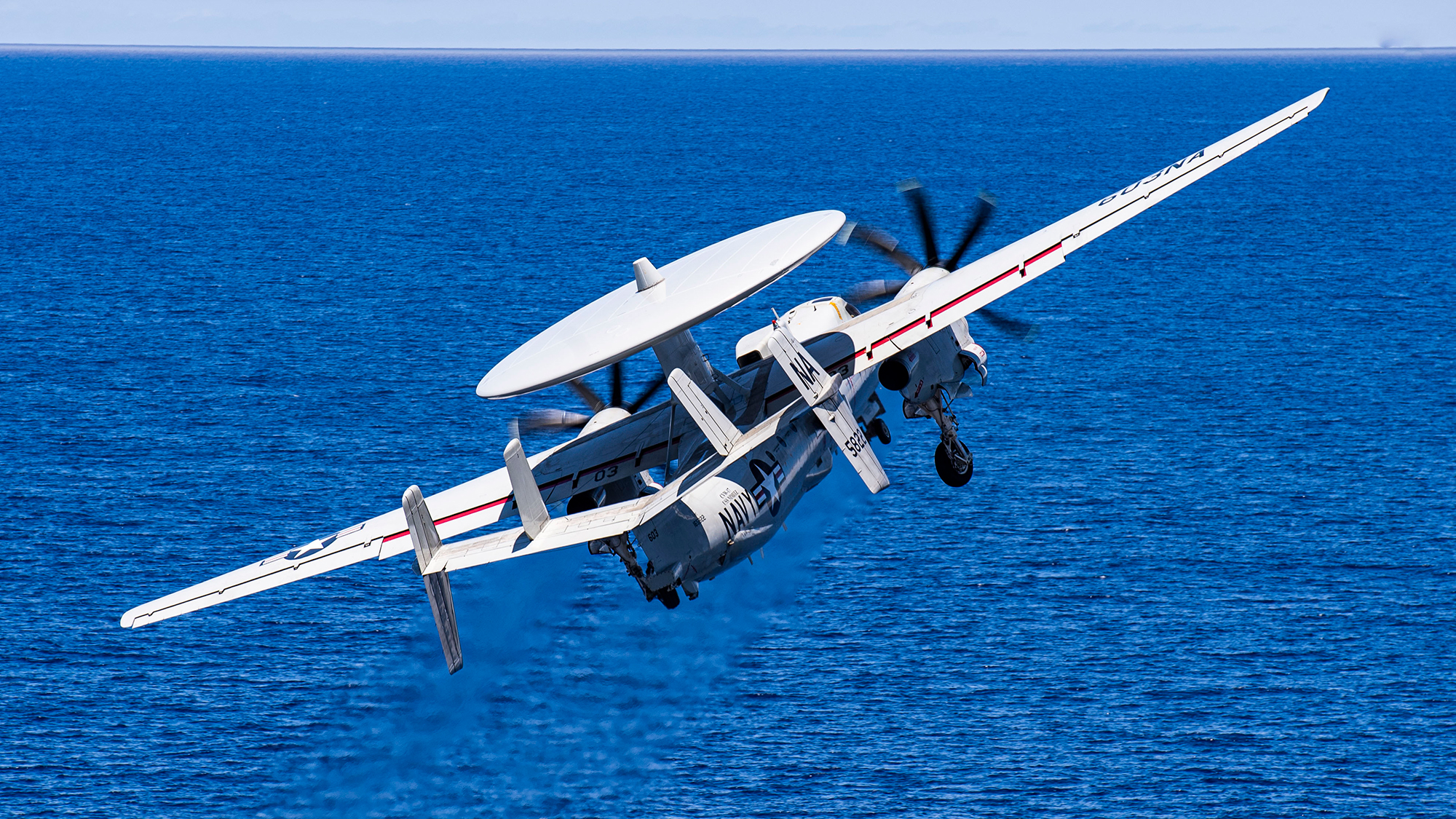

On June 27, defense giant Northrop Grumman announced that it had successfully flown a plane with a new navigation system. Designed to work in situations where GPS signals may be difficult or impossible to get, this Embedded Global Positioning System (GPS) / Inertial Navigation System (INS) Modernization, or EGI-M, is a tool that could someday help fighter jet pilots and other aircraft fight through the jammed skies of a future war.
For the May flight test, instead of trying the system on a fancy fighter or high-end military craft, the EGI-M was reportedly flown on a Cessna Citation V business jet.
“This flight test is a major step forward in developing our next generation airborne navigation system,” Ryan Arrington, a Northrop Grumman VP, said in a release. “The EGI-M capability developed by Northrop Grumman enables our warfighters to navigate accurately and precisely through hostile and contested environments.”
There’s many ways that a sky can be made inhospitable to intruding aircraft. Anti-aircraft weapons, primarily missiles and rockets but also fighter jets and sometimes anti-air guns, can all try to shoot a plane out of the sky. Jammers, or other tools and electronic warfare systems designed to interfere with signals in the electromagnetic spectrum, can block the information that pilots or drone operators need to operate their aircraft. The former kind of interference is referred to by the military as “kinetic” or physically destructive, the latter broadly is “electronic warfare.” Both kinds of interference can make for a hostile and contested sky.
The United States military has, for decades, operated in skies it could quickly and reliably control.
“Last time an American soldier died from an enemy aircraft was April 15th, 1953,” said James Hecker, a general in the U.S. Air Force, on a recent episode of the War on the Rocks podcast. “We’ve gotten a little bit spoiled, especially in the last 30 years. Desert storm, we had to fight for air superiority, but we got it really quick. Other wars that we’ve been in in the last 20 years, we got it uncontested.”
Hecker was speaking alongside Air Marshall Johnny Stringer of the British Royal Air Force, in a discussion about lessons learned about air superiority in Russia’s invasion of Ukraine.
“The biggest lesson learned that really the world has gotten out of this is what happens if you can’t get air superiority. What we’ve seen on both sides is that neither one was able to get air superiority,” said Hecker, who went on to note that the reason neither side can claim air superiority is because both sides have very good integrated air and missile defense systems.
While these defense systems are primarily missiles, being able to block out some of the signals used by planes and drones also impedes the aircraft’s ability to function. GPS systems, originally developed for military use, depend on aircraft receiving and using signals from space, and then being able to match that to a physical position on or above the earth.
The EGI-M is designed to operate in GPS-contested and GPS-denied environments, or places where the signals face interference and complete obstruction. To get around that, an inertial navigation system uses sensors like gyroscopes to instead track changes and speed of movement from a known point, allowing the aircraft’s movement to locate it in space. To help in GPS-contested environments, the system can receive GPS-M signals, which is a higher code of GPS signal specifically reserved for military functions; it is designed to be harder to obstruct and more secure in transmission.
In the May flight, the Cessna testbed carried three models of the system, which it used to capture three different kinds of navigational information. As outlined in a conference abstract, found by The Aviationist, the three types of navigational data were inertial only, GPS only, and a blended GPS/inertial management system that used both at once.
As designed, the EGI-M system will go into two planes upon launch. One of these is the F-22 Raptor, a stealth air superiority fighter exclusively flown by the United States Air Force, which will be crucial to flying into and fighting to open any contested sky. In addition, EGI-M is designed to launch on the E-2D Advanced Hawkeye, a prop-driven plane operated by the Navy that features a large radar in a disk mounted above the plane’s fuselage. The Hawkeye is a command and control aircraft, used to perceive allied and enemy movement and direct battle while airborne.
New navigation systems will not guarantee that US or allied aircraft can permanently clear a sky in the face of hostile foes, but they can expand the window in which such aircraft can reliably operate, and can make reasserting air superiority easier.